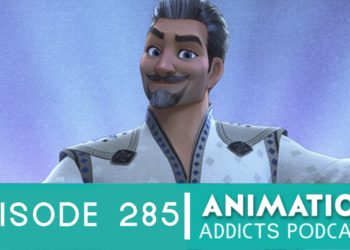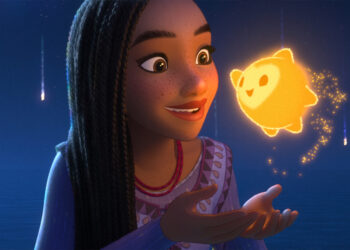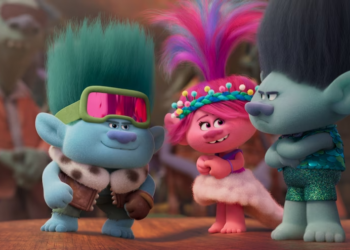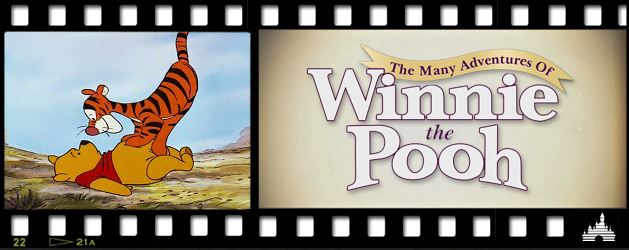
Ah, Winnie the Pooh! Is there anyone who doesn’t like Winnie the Pooh? (Actually yes, I can think of one person, but anyhoo.) Winnie the Pooh is generally a beloved character worldwide. And what’s not to love about him? As his theme song goes, he’s a “tubby little cubby all stuffed with fluff!”
He also has interesting friends and neighbors: Tigger, Owl, Piglet, Rabbit, Christopher Robin, etc. Many people became enamored with these characters from the original books written by A.A. Milne. But, arguably most people came to know them from their Disney adaptations. That brings us to the subject of this article, the 22nd film in the Disney Canon: The Many Adventures of Winnie the Pooh.
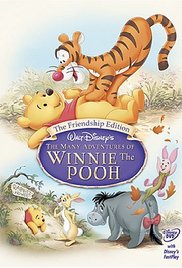
Released in 1977, The Many Adventures of Winnie the Pooh is technically a package film: it’s composed of three separate Winnie the Pooh segments put together as one film. The difference though between the likes of this and the package films of the ’40s is that this film’s segments are cohesively tied together. This was done by having the same characters feature throughout the segments as well as having a narrator (Sebastian Cabot) connect the stories together.
The first segment of the film is Winnie the Pooh and the Honey Tree. Originally released in 1966, this segment basically introduces us to Winnie the Pooh (voiced by Sterling Holloway) himself. We learn that he’s a “bear of very little brain”, almost always hungry for honey, and willing to do anything he can to obtain it, including disguising himself as a rain cloud.
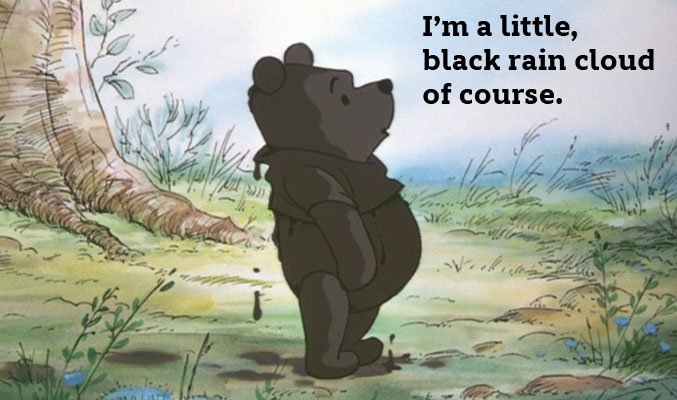
Later on in the segment, he gets stuck at the entrance to his friend Rabbit’s house after having eaten too much honey and has to wait until he loses some weight to be able to get “un-stuck!”
The second segment of the film is Winnie the Pooh and the Blustery Day. Originally released in 1968, this segment introduces us to two characters that were absent in the first segment. One of the characters is the bouncy Tigger whom Pooh first makes the acquaintance of in this segment. But, the other is Pooh’s best friend, Piglet, who apparently has been friends with Pooh for a long time! Nowadays, it’s almost impossible to not see Pooh and Piglet together in merchandise or other animated series. So, it makes me wonder why they didn’t include him in the first segment of the film. Were they just planning on not including that character?
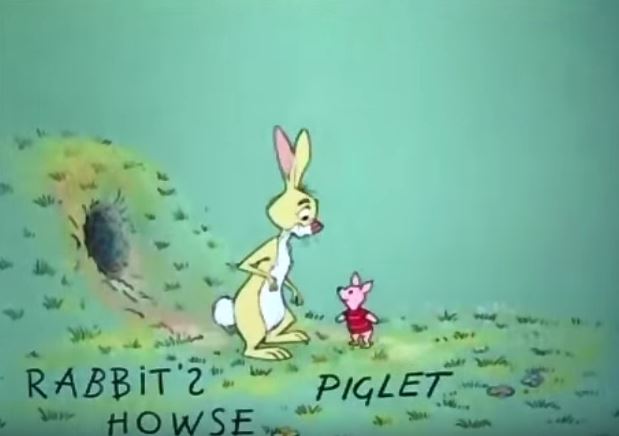
The third and final segment of the film is Winnie the Pooh and Tigger Too. Released in 1974, this segment shows Rabbit getting fed up with Tigger’s constant bouncing that often ruins his day (Rabbit’s that is, not Tigger’s). So Rabbit devises a (somewhat sinister) plan of losing Tigger in a forest for a day and hoping that that would get rid of his bounciness. Needless to say, that plan backfires, and you’ll have to watch the segment yourself to see what happens.
The best way to describe the film is charming. The stories are simple to follow and loaded with charm. The storybook aspect is creative, and the narration is charming. The music by the Sherman Brothers is catchy, and the characters are lovable. We even see aspects of Pooh’s character in this film that seem to have been forgotten over the years.
We all see Pooh as a perpetually joyful fellow, but in this film, he shows us that he can get annoyed and frustrated! We all think that Pooh isn’t particularly intelligent, but he uses words such as “deception” and knows of the existence of animals called “elephants and weasels” (not to be confused with “Heffalumps and Woozles”). We even see Pooh carrying a gun for protection which you definitely won’t be able to see nowadays!
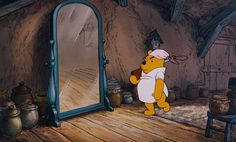
All in all, this package film is probably the quintessential best adaptation of the Hundred Acre Woods characters and is definitely worth a look!
What’s your favorite segment of the film? What’s your favorite Winnie the Pooh film, in general? Let us know in the comments below!
Edited by: Kelly Conley


